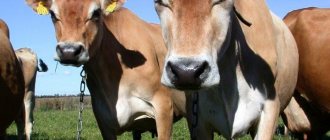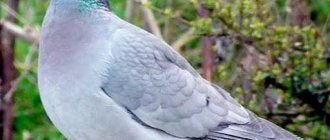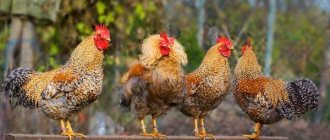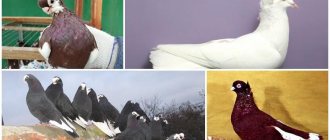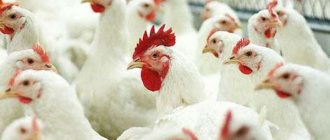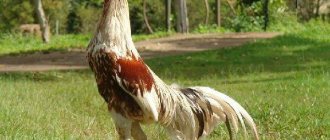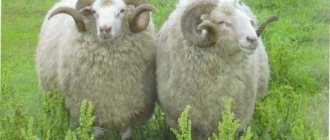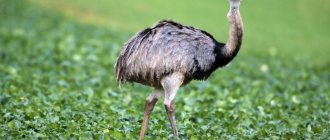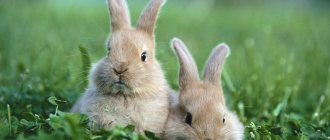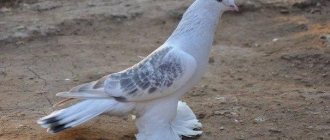Chicken is not always just an egg or meat. After all, once you look at a chicken from a non-consumer point of view, it immediately becomes noticeable that this bird is quite good-looking. A fluffy tail, a beautiful comb - why not decorate your household? Decorative and rare breeds of chickens have long become an independent trend in poultry farming. That's why we decided that now is the time to make a rating of the most unusual and elite chickens!
- Second place
- Third place
- Fourth place
- Fifth place
- Sixth place
- Seventh place
- Eighth place
- Ninth place
- Tenth place
- Eleventh place
- Twelfth place
- Thirteenth place
- Fourteenth place
- Fifteenth place
- Photo gallery
- Video “Rare breeds of chickens”
First place
We give first place in our ranking to one of the rarest breeds in the world, the number of heads of which amounts to only a few hundred. The rare breed is called Ga Dong Tao. These chickens come from Vietnam and only live in their homeland. The breed was originally a fighting breed; the bird's dimensions are average: a rooster weighs 3-4 kg, and a chicken 2.5-3 kg. A distinctive feature of unusual creatures, for which we actually gave them primacy in our rating, are thick, one might say, even ugly legs.
In general, the Ga Dong Tao is a stocky, broad-chested bird with short wings and a long neck. The toes on thick legs are shortened and it should be noted that this feature does not make the breed attractive. The fact is that Ga Dong Tao fighting cocks were bred not only for spectacular fights, but also for meat. And in Vietnam, where chicken legs are a delicacy, chickens with especially thick and fleshy limbs were selected. And thus contributed to the formation of such an unusual quality in chickens.
Fighting breed Ga Dong Tao from Vietnam
Considering rare breeds of chickens, one cannot help but dwell on the Ga Dong Tao variety, which is rare and lives only in Vietnam. The population numbers only a few hundred birds.
These chickens were bred about 600 years ago, and were originally considered a fighting breed, but nowadays individuals are classified as meat and ornamental. Ga Dong Tao chickens have medium body sizes, the male reaching a weight of 3 to 4 kg, and the female from 2.5 to 3 kg.
The large limbs of Ga Dong Tao chickens are not very attractive, however, residents consider the legs of these birds to be a delicacy. But, despite the thickness of their legs, individuals are able to move quickly and successfully fight with rivals.
The Ga Dong Tao fighting chicken breed has an ancient history.
The distinctive features of this variety include:
- dense and massive body;
- short, plump neck;
- small wings;
- a nut-shaped red comb on the top of the head;
- scanty plumage;
- thick legs with scaly growths on the skin.
Second place
We gave silver in our rating to the no less unusual breed Ayam Tsemani, which means “black rooster”. Actually, that says it all, because these chickens are completely black. They have black feathers, a comb, a beak, paws, eyes, but what is especially striking is that even their bones, meat and blood are black! I must say that the coal-black chickens look somewhat ominous. Unusual rare chickens originate from the island of Sumatra.
Apart from their unusual color, Ayam Tsemani chickens have nothing special to boast about; their egg production is low, and their weight is also small - about 1.5 kg. Therefore, the breed is rare; they are kept only by lovers and connoisseurs of everything unusual. After all, a rooster dressed in blue-black walking through the courtyard cannot help but surprise!
Ayam Tsemani
Chickens of this breed are called mystical because of their black color. Everything about them is black - plumage, eyes, skin, comb, earrings, internal organs, meat, bones, bone marrow, egg shells. Their blood is also dark red, almost black, and all because the chickens’ body produces too much melanin. The fibromelanosis gene stimulates the development of a large number of black pigments; according to scientists, the mutation arose several centuries ago in Asia.
And the name of the breed comes from the village of Tsemani in Indonesia, ayam tsemani means chicken from Tsemani. These exotic chickens first came to Europe at the end of the 20th century, and now they are one of the most expensive breeds of chickens in the world - one chicken costs 2.5 thousand dollars.
Apart from the unusual coloring, Ayam Tsemani chickens are no different from their other relatives. They have a small head, a medium-length neck, a rounded chest, and wings that fit tightly to the body.
Roosters have a large crest, a high bushy tail, and a short, black beak, thick at the end.
Ayam tsemani are small chickens and their productivity is not high. An adult rooster weighs 1.8 kg, and a hen weighs 1.2 kg. Chickens also do not shine with egg production - in the first period of egg production, the hen produces about 100 eggs with black shells and weighing 50 grams. After some time, the productivity of laying hens becomes even lower.
In East Asian countries, chickens of this breed are valued for their unusual coloring; it is believed that chickens living in the yard of a house can bring good luck to their owners, the ayam tsemani rooster crows for happiness, and eating chicken meat relieves pangs of conscience.
In Russia, ayam tsemani is a rarity, and it is even more difficult to find a purebred individual for breeding. Those who want to have chickens of this breed at home need to buy them directly in their homeland. Having bought and delivered a bird from distant countries, you need to make an aviary with a roof for it, because the bird flies well and will try to fly away into the wild.
A breed of chickens from warm Asia in Russia will need a warm room and high-quality nutrition with vitamins and minerals.
Third place
Beautiful, rare and unusual Phoenix chickens took bronze in our rating! The unusual thing about these eastern birds is their very long tail. Its minimum length is 3 m, but restless breeders are still working on the maximum. At this stage, a rooster with an 11-meter tail has been obtained! Phoenix chickens originate from the Far East; in China and Japan they have their own role in mythology; long-tailed birds are valued and revered there.
It is believed that incredible roosters roamed the imperial palaces, and having a long-tailed bird at home was always considered a guarantee of incredible luck. Having an ornamental breed on your farm is not so easy; in Japan, the sale of Phoenix roosters is still prohibited, and killing a sacred bird is punishable by law!
Fourth place
Another ancient breed has found its place in our ranking - this time we will talk about the Chinese silky chicken.
Attractive hens with a solid history have a number of incredible features:
- their feathers are not interlocked, so they look more like fur or wool;
- the silky hen does not have juvenile molt;
- on the head of unusual birds there is a fur cap that covers the entire head of the chicken and falls over the eyes;
- the skin of birds, as well as the earlobes and beak, have a bluish tint;
- Silk chickens have five toes on their feet.
Chinese silk chicken belongs to the decorative trend. In a year, she is capable of laying only 80 eggs, and her weight rarely exceeds 1.5 kg. Therefore, its main purpose is to decorate the courtyard, and they have been doing this for quite a long time. The first information about the breed can be found in Aristotle, who wrote about them as chickens with unusual “cat hair.” Which, by the way, is cut by some breeders of the breed.
Unusual and rare breeds of chickens
Chickens are birds from the galliformes family of pheasants. Probably, the domestic chicken we are familiar with comes from a wild Asian ancestor - the bank chicken. Experts named different periods of domestication of chickens: approximately 2000 BC. e., 3200 BC. e. and even 6000-8000 BC. e. Various regions were also called the original territory: India, Southeast Asia and China, etc.
Today there are a large number of chicken breeds of different appearance and size, and some of them are on the verge of extinction. Unusual and rare breeds of chickens are presented here.
Silkie
The Phoenix rooster has a super long tail from 3 to 11 meters. They can be of various colors: black with red, black with silver, black with gold and white. This is a very rare species that does not tolerate cold climates and is difficult to care for, primarily due to its very long tail.
Polish Crested
Polish Cresteds are a European breed, possibly originating in the Netherlands, where traces of it can be traced. This strange breed is easily distinguished by its thin comb and lush cap (tuft) of feathers. Polish chickens come in a variety of colors and are bred primarily as ornamental birds. Their crests prevent them from seeing well, making them more susceptible to predators (such as foxes and hawks).
The Crèvecoeur is an elite and rare breed of chicken from France, named after the city of Crèvecoeur in Normandy. These oddball chickens are one of the oldest French chicken breeds and are typically used in bird shows. They are medium in size and do not lay eggs very often. Most often, the cracker is black, less often blue, white or pockmarked.
The Araucana is a breed of chicken originating from Chile. The chicken is unusual in that it lays colored eggs (turquoise, blue), which are often called Easter eggs. The araucana also does not have a tail, and in some standards they are specially cut off. This is a rare breed that is difficult to breed; many chickens die while still in the egg.
The Sultanka is a rare Turkish breed, which is easily distinguished by its lush crest and beard, as well as the abundant feathering of its legs. Like the snare, it is one of the few breeds that have five toes on each foot. Sultankas come in three types, black, blue and white, the latter being the most popular. They are docile, calm and friendly animals, although they require a little more care than regular chicken breeds.
Polverara
The Polverara is an ancient crested breed from the small town of Polverara in the province of Padua in northeastern Italy. They attract breeders not only with tasty meat and a large number of eggs, but also with an unusual crest structure and a small crest. The breed almost disappeared in the early 1900s and again in 2000. Today there are two varieties, black and white.
Bare-necked chickens
The breed originates from Transylvania, hence the other common name is Transylvanian chickens. Sometimes, they are mistakenly considered a hybrid between a chicken and a turkey. The unusual appearance of the breed is controlled by a dominant gene. Despite their strange appearance, they are not bred for exhibition. They are kept mainly for their eggs. The average egg production is 180 eggs in the first year and 150 in the second.
Naked chickens
Also known as featherless chickens. This strange breed was created by a team of researchers led by Avigdor Kahener, a geneticist at the Rehovot Institute of Agronomy near Tel Aviv, Israel. The red-skinned chicken was created by crossing a naturally occurring breed of naked chicken with a regular broiler. Due to the complete absence of feathers, these chickens grow faster with less food. Plus, they don't require feather plucking, a process that often pollutes the environment.
Fifth place
We divided the fifth and sixth places between a whole category - Polish crested chickens. These rare breeds of chickens are represented by Paduan and Dutch white-crested chickens, we gave the first fifth place, the second sixth.
There is some misunderstanding why, for example, Dutch white-crested chickens are also called Polish. There may be several explanations for this. The mentioned chickens are united by a feather cap, slightly different in pomp and shape. Therefore, according to one version, all crested chickens began to be called Polish, because their “headdress” resembled the hat of a Polish soldier.
According to another version, the name Polish Crested came from the word “poll” - hair in translation. There is another opinion: according to him, Poland served as a bridge between Europe and the East. Allegedly, there is information about the movement of the ancestors of modern forelock chickens from Asia through the territory of modern Poland.
At the same time, Italy, namely the city of Padua, was recognized as the homeland of the Paduans, because even in the Roman Empire unusual crested chickens were known. The video below shows a selection of photos of beautiful Paduan chickens.
Paduans are rare ornamental chickens. Paduans are elegant and graceful, their crest is very fluffy and spherical. It covers the entire head of the bird, this is facilitated by the lack of a comb in this breed, but there is a beautiful feathered beard. The color of the plumage can be varied, from classic black or white to unusual bright options. In terms of productivity, Paduans are also classified as meat and egg breeders, with a productivity of 120 eggs and a weight of 1.5-2.5 kg.
Care, feeding and maintenance
Available containment systems:
- Floor-standing (preferably with a walk);
- cellular.
Chickens lay eggs more readily at temperatures of 15-20 degrees. In winter, the chicken coop does not need to be heated, but we must remember that at a temperature of 2 degrees below zero, the bird’s comb is already frostbitten.
A guide to the experience of experienced ones: poultry will need a smaller coop if you equip multi-level perches (representatives of the breed are good flyers).
The nests are installed in a dark place. For 10 chickens, two nests are enough. By the way, if you plan to reproduce the herd naturally, there should be one rooster for every ten females.
The optimal walking option is a fenced 1.8-meter enclosure, covered with a net on top.
Russian white laying hens do not shine with maternal qualities. A rare bird is puzzled by incubating eggs. For this reason, artificial incubation is the basis for livestock reproduction. An alternative is a bird of a breed with a pronounced brooding instinct.
The safety of young animals in the first weeks of the postembryonic period is up to 100%.
The maximum chick waste is 5%.
The weight of a chicken on the first day of life is 45 g, and at 30 days of age it is about 650 g.
The maximum weight is recorded in a 6-month-old bird.
Chick raising and feeding
It will be useful to become familiar with the rules for caring for young animals. The chicks dry out in an incubator, after which they are kept in a wooden or cardboard box at a stocking density of 13-14 birds/m2.
A comfortable temperature for emerging chicks is 29-32 degrees. The formation of the system responsible for thermoregulation occurs during the first month after the incubation period.
Constant access to a drinking bowl with warm water is required.
The “house” with chickens is installed under the lamp. Daylight hours are 24 hours. A minimum distance of 40 cm is maintained between the floor of the box and the light source.
The diet of 2-5-day-old young animals consists of boiled eggs, cereals, and cottage cheese. The whole thing is ground before serving. The feed mixture for older chickens is supplemented with yeast, herbs, and vegetables.
Daily activities include disinfection of feeders and drinkers. Disinfectants: soda and potassium permanganate. Some poultry farmers limit themselves to rinsing equipment with boiling water.
In order to satisfy the chickens' need for minerals, they are fed with crushed chalk and shell rock. A container with calcined sand will be useful.
Feeding adult chickens
How do you feed adult laying hens? The recommended daily intake for them is 170 g of feed mixture or mixed feed.
Feeding mode – 3 times.
The grain portion predominates in the diet - up to 60%. The range of other foods includes root vegetables, boiled potatoes, fish and meat and bone meal, vitamin and mineral supplements, and yeast.
Sixth place
Dutch white-crested hens are considered one of the national symbols of Holland. There is an opinion that in the distant 15th century they were an ordinary meat and egg breed, however, breeders, having decided to improve the appearance of the chickens, poured into them the blood of Polish Corydalis. Perhaps this is also why all crested chickens are called Polish. The Dutch white-crested hen has an extraordinary appearance - all of its plumage has a rich black color and only the lush crest stands out as white.
We can find beautiful tufted chickens in the paintings of animal artists of the 17th century. And some breeders over time began to call crested birds chickens with a hairstyle, and each “hairstyle” is unique in its own way. Naturally, the Dutch White-crested is primarily a decorative breed. Having such a specimen on your farm is happiness for the breeder-collector. However, the beauty hen should provide you with 140 eggs.
A little history about chickens
The earliest mentions of domestic chickens are known for 3 thousand years BC and have eastern roots: China, India and Japan. The breeds of these countries include chickens:
In distant times, they served more as a luxury item or were used as food in some places. With the advent of Shanghai chickens in England, special bird exhibitions appeared. The first such exhibition was held in 1845 at the Crystal Palace in Great Britain, and 10 years later in Moscow.
Read also: Bantam Chickens: types, breed description
Over time, poultry farming societies began to form with the goal of distributing purebred productive breeds. For this purpose, various complex and self-regulating incubators have been developed.
And as a consequence: a huge industry arose for breeding chickens, mainly common breeds, for food. But there are many enthusiasts in different parts of the world who are passionate about breeding unique and most valuable breeds of chickens.
Seventh place
In seventh place is the rare old breed of Westphalian Totleger chickens. This German breed was once a frequent resident of farms. However, with the advent of many highly productive crosses, the old breeds gradually began to fade into the background. Alas, the same fate befell the beautiful birds of the Westphalian Totlegers. Their peculiarity is that Westphalian laying hens retain the ability to lay eggs until their death; it was for this quality that they were previously valued.
Westphalian chickens have a beautiful streamlined body shape, abundant and loose plumage. Roosters have especially long feathers on the collar area, the feathers of which fall all the way to the back of the bird. The productive qualities of the bird are average, the weight of the rooster is about 2 kg, and the weight of the hen is about 1.5 kg. Egg production is at the level of 150 eggs. The breed is maintained by a small number of dedicated breeders or those who appreciate and love rare breeds.
Eighth place
Another rare European breed in our ranking in eighth place is the Lakenfelder. These beautiful chickens from Belgium were even on the verge of extinction until the population began to be maintained artificially. Connoisseurs of the breed are engaged in maintaining it due to its unusual exterior characteristics.
The neck and collar of these chickens are painted black, although the rest of the chicken remains white. There may be patches of black on the tail; in roosters it can be almost completely black. But to achieve such a standardized coloring of Lakenfelder hens, you need to be patient, because many chickens are born pure black or pure white.
And only some of them will be half and half black and white. Therefore, we advise only professionals to breed rare Lakenfelder hens, so that not a single hen or cockerel goes to waste. It must be said that the egg productivity of black and white laying hens is not bad - 180 eggs per year, with a hen weighing about 2 kg.
Decorative breeds of chickens
In Japan and China, breeds of chickens have been developed in which the roosters' tail feathers change once every three years or do not change at all, although they continue to grow. Such roosters live in special high cages on perches, and for walking, the bird’s tail feathers are wrapped around a special device. These are the Yokohama, Onagodori, Phoenix (bred in Europe) and some others. Interestingly, chickens have normal tail feathers. Such a bird is the pride of the owner; according to the teachings of Feng Shui, a rooster brings prosperity, wealth and happiness to the house.
Ornamental chickens also include dwarf chickens of various breeds, curly chickens, short-legged chickens or creepers (crawling chickens), Seabright or Malaysian Serama. Many fanciers also keep fighting chickens for decorative purposes. For example, Malayan fighting, English fighting, Thai breed Shamo, Azil, Kulang and many others.
The rarest and most expensive of the fighting chickens is the Vietnamese big-legged Ga Dong Tao. A pair of these chickens is estimated at 2.5 thousand dollars. Another breed of fighting chicken, the tailless Araucana, was bred by Indians in Chile. This breed, like its related Ameraucana and Legbar, lay blue eggs.
The ancient breeds Brama and Cochin, bred in Asia, can also be considered decorative. Brahma chickens have light, dark and fawn colors. An adult rooster can weigh up to 4.5 kilograms. The body position is vertical. The height of a rooster can reach 91 centimeters. Despite its fighting past, the bird is easily tamed, has a calm character and can roam freely.
The Cochin breed is characterized by very lush plumage, a small head with a small comb, well-muscled carcass, and feathered legs. They come in white, black, blue and many other colors. An adult rooster of this breed can weigh up to 5 kilograms. Hens lay about a hundred eggs a year, with maximum productivity occurring in the winter. They also make wonderful hens. The bird has a calm character and does not dig in the garden. They have a dwarf shape.
There are two breeds of chickens that have black feathers, skin, meat and bones. The Indonesian Ayam Cemani also has a black shell, while the Uheyiliu egg shell is green. Another breed of chicken with black pigmentation and colored plumage is called Lakedanzi, which lays green eggs. The eggs and meat of these chicken breeds have healing properties.
The unique laughing chicken from the island of Sulawesi (Indonesia) is considered very rare. Instead of the familiar rooster crow we hear, the bird makes sounds similar to laughter.
Seabright chicken. © Teresa Delcambre
Chicken "Ukheyiliyu". © Fur breeder
Chicken "Cochin". © BackYard Chickens
Ninth place
This time it’s the turn to talk about the breed of Breda chickens. Also once popular in Dutch farmsteads, the breed is now very few in number. These chickens have a number of features, for example, there is no plumage on the head of these birds, and instead of a rudimentary crest, a symbolic crest grows. Because of this, Breda's chickens are sometimes called "crow's head". The feathering on the legs of chickens, and especially Breda roosters, grows very abundantly.
Breda roosters are generally very well feathered, especially their tail. The breed is considered very hardy and healthy. In addition, Breda chickens can become real pets. They have a calm disposition, they quickly get used to people, and can become practically tame. The productive qualities of unusual hens are very good: you can expect about 160 eggs with a laying hen weighing 2-3 kg. At the same time, everyone who tried Breda’s meat noted its unusual taste, unlike the taste of chicken meat we are used to.
Tenth place
Rounding out the top ten rare and elite chicken breeds is a variety with the beautiful name Wyandotte. The standard for Wyandotte chickens was established in 1883 in the USA, a country recognized as the birthplace of beautiful birds. Wyandotte chickens come in as many as 15 different colors. Moreover, each chicken is colored differently, and the feathers have a spectacular edging. The most common color is white Wyandotte, which also has an unusual pink comb.
The productive qualities of Wyandotte chickens are quite good: the weight of the cockerel is 3-3.5 kg, and the weight of the hen is 2.5 kg. Egg production is 150-180 eggs, that is, the Wyandotte breed belongs to the meat and egg breed. This beautiful breed is very rare in our country. Bred only in some collection farms to maintain the gene pool of unusual birds.
Meat and egg breed of Wyandotte chickens
This species of bird was bred in the mid-19th century. The ancestors of Wyandotte chickens are representatives of the Dorking, Leghorn, Cochin, Brahma and Bentham-Seabright breeds. These birds appeared in Russia only at the beginning of the 20th century, and today there are more than 15 varieties of individuals, differing in color.
The popularity of Wyandotte chickens is associated with high productive qualities.
Wyandotte chickens are:
- silver;
- golden;
- white;
- blue;
- black;
- yellow;
- red;
- silver;
- golden blue;
- golden black-edged;
- golden white and others.
Chickens of this breed have an average body weight, for roosters from 3 to 3.5 kg, for hens - no more than 2.5 kg.
Distinctive features of individuals are:
- long body;
- wide back and powerful shoulders;
- small, neat head;
- short yellow beak;
- a small comb that fits tightly to the head;
- bushy tail;
- paws intense yellow.
This variety of chickens is classified as a meat-egg breed, characterized by early maturity. Individuals grow quickly and in the first year 1 laying hen can produce up to 200 eggs, and in subsequent years - from 150 to 170. It is noteworthy that egg production rates in single-colored chickens are higher than in individuals of mixed colors.
Eleventh place
Our rating continues with a truly natural wonder. We are talking about Bald Israeli chickens, specially bred by Professor Avigdor Kohaner. The professor explained his research by saying that in the Israeli heat, chickens don’t need plumage at all, and after 25 years of vigorous activity, he managed to “turn off” the unnecessary gene. Of course, bald chickens with reddish skin are unlikely to decorate any chicken coop, because their appearance, to put it mildly, is specific.
So far, the meat breed is not at all widespread. After all, some breeders are wary of them, and conservationists even rebel against such experiments on birds.
Twelfth place
In twelfth place we placed another rare European breed, the Barnevelder. Nowadays you rarely see these beautiful birds in farmsteads. This breed has a unique plumage that no other breed has. Each feather has a double edge and looks like lace. We can say that Barnevelder chickens have very good prospects for mass breeding. Indeed, in addition to their spectacular appearance, they can offer the owner about 180 very large (about 80 g) eggs and 3-3.5 kg of meat.
Redbrough
Redbrough is the work of English breeders. Experts used Cornish and Malaysian fighting birds. Redbros have meat productivity. The offspring inherits the stable characteristics of the parents:
- Redbird birds are large, distinguished by a wide chest and back. The plumage is thick and dense. Individuals tolerate heat and low temperatures well. If the poultry house maintains a temperature of 10 C in winter, then heating is not provided in it;
- color brown and white. Light feathers on belly and tail. Pink comb and earrings. Paws are light yellow;
- redbros don't like cages. They are kept in spacious enclosures or on pasture;
- adult roosters reach a weight of 4.5 kg, hens 3.5 kg. Young animals gain productive weight in 90 days;
- The female's first clutch is at six months. In the 2nd year of laying, a laying hen can produce more than 250 eggs. The eggs are large, with a beige shell. Egg weight 70 g. Males mature at 9 months.
Rhode Island and Redbird birds are unpretentious, but they will not eat dirty food. They constantly rake up the dirty litter, clearing a place to rest. The poultry house is cleaned daily. The room is ventilated. Individuals are in good health, but polluted air irritates the mucous membrane of the respiratory tract. Chickens get sick.
In the summer, the herd is kept on a feeding area. It is recommended to provide a canopy on it. Drinkers and feeders for dry food are installed under the canopy. When the temperature drops to -5 C, the flock is brought into the poultry house. A spacious enclosure with a bedding made of wood shavings is being prepared for him.
Thirteenth place
In the “unlucky” thirteenth place are chickens of the Dominic breed. This breed is considered the oldest American breed, because its roots go back to the times of colonization of the New World. Now the once popular breed is being replaced by new highly productive crosses, and the same thing is happening in Europe. In particular, Dominic became the basis for the emergence of the Plymouthrock breed, which is much more common today and serves as the genetic material for many broiler breeds.
Dominique chickens, which were bred by early American settlers, have beautiful black and white cuckoo plumage and a rose-shaped comb. Their plumage is so lush that from the outside they look like a striped ball of feathers. They belong to the meat-egg type, laying hens produce approximately 180 eggs per year, and weigh 2-2.5 kg. Roosters are heavier - their average weight is 3.2 kg.
Dominique chickens - the rarest breed from the USA
Chickens of this variety were bred during the colonization of America, based on birds brought by settlers from European countries. As a result of such spontaneous selection work, a new breed was obtained, characterized by high egg production.
The Dominican breed is considered the ancestor of all American chicken breeds.
Later, based on Dominic chickens, other breeds with better performance were bred, and the variety was on the verge of extinction. However, enthusiasts have done a lot of work to restore the population, as a result of which the breed still exists today.
Chickens of this variety are distinguished by the following characteristic features:
- compact body of medium size;
- abundant and soft plumage;
- large pink comb;
- large round earrings;
- long light yellow beak;
- short neck;
- powerful back;
- small wings;
- tail raised high;
- large paws.
Roosters of the Dominic breed reach 3.2 kg, hens gain weight up to 2.3 kg. The egg production rate is 180 eggs per year with an average weight of 55 g. A significant advantage of this breed is the ability to survive in any climatic conditions and high safety of the young.
Fourteenth place
In fourteenth place are another unusual creation of the chicken world - Icelandic Landrace chickens. Their uniqueness is that these birds are able to withstand severe frosts. This feature is formed by long centuries spent in the harsh Icelandic climate. The Vikings also brought chickens to Iceland for breeding, but many of them could not survive in the harsh climate. And those that withstood the test of frost later became the national Icelandic breed. The plumage of northern hens can be varied.
Icelandic Ladras are very active and freedom-loving chickens, they do not accept cage housing, and they lay eggs almost all year round; frost is not a hindrance to them. As a result, you can definitely expect approximately 200 eggs per year from northern hens. In this case, the weight of the chickens is 2.5-3 kg. By the way, this breed is so accustomed to the harsh climate that they do not take root at all in southern latitudes, it is too hot for them there.
Well, you and a chicken, the most unusual breeds of chickens
When sadly choosing another emaciated chicken carcass or leg in the store, we usually wonder if these representatives of the fauna died of natural hunger.
And when we mention such expressions as: “Well, you’re a chicken...” - our imagination doesn’t picture anything beautiful either. You and I are accustomed to the image of a chicken that we saw in villages, supermarket shelves or pictures from children's fairy tales. But few people know that there are such unusual breeds of chickens that they are not raised for the purpose of making borscht or soup.
Read also: Slaughtering and cutting up quails at home
Man started domesticating the chicken more than 8,000 years ago. Since then, more than 700 species and breeds of domestic chickens have been raised. In our country alone, about 100 breeds have been bred through selection. Chickens are among the most useful and productive poultry. They are bred for meat and eggs, and they also produce feathers and down.
All breeds (as well as hybrids) are divided into groups according to their use:
Fifteenth place
Our rating is completed by the English Red-Capped Chicken. This is a very rare breed of chickens, the decoration and feature of which is an unusual comb in the shape of a rose-cap. Unusual chickens have long been bred in the UK, but now they are also being replaced by new crosses and breeds. Red-capped hens were bred for eggs, which they produced 150-200 per year - previously a very good indicator and average by modern standards.
Several English collectors are now involved in maintaining the breed, who prevent the breed from completely disappearing from the face of the Earth.
